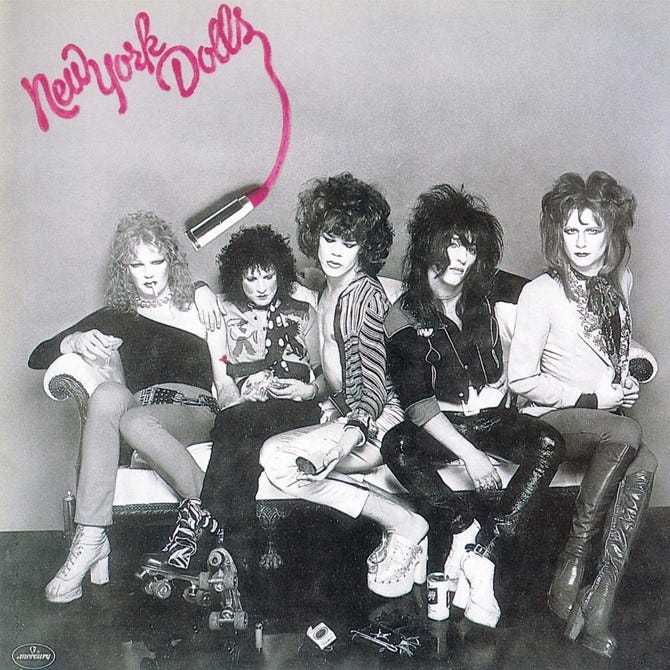THE GENRE PROJECT - January 4 - Glam Punk
Genre of the Day - Glam Punk
Album of the Day - New York Dolls by New York Dolls (1973)
Today’s genre is a bit of a relief compared to yesterday’s abstract, academic approach to music, as it’s one that feels conceptually more familiar while also being a genre I haven’t personally really delved into. While I obviously know on the surface what punk is aesthetically and the general sound of punk, I began today’s listening journey by grounding myself more in its historical origins. Punk is a fantastic example of how class and music are always intertwined, as it was developed by young musicians from lower class backgrounds dissatisfied with their perception of rock’s growing tendency towards materialism going into the 1970s. The music itself is characterized by this sense of frustration: insistent, aggressive drumming and guitars and loud, assertive vocals. Glam punk takes these core tenets of punk and combines them with glam rock’s subversive fashion androgyny and flamboyance.
Rate Your Music’s top album among glam punk records is New York Dolls’ eponymous debut, which essentially created the subgenre overnight. While a bit of a commercial failure at the time—the guitar playing was described by one contemporary review as akin to lawnmowing—the album has gained cult classic status. The New York Dolls were enormously influential to later acts of the subgenre and also in bridging the gap between punk and fashion, as the band was beloved by Vivienne Westwood, whose iconic designs—worn by the Dolls themselves—can be credited with bringing punk fashion to the mainstream. Glam punk is a genre in which the music’s identity is reliant on aesthetic qualities, which I find interesting because in every era people decry looks or fashions exerting undue influence over music, but the New York Dolls’ story shows that fashion and the way acts craft their look are in communication with the music’s significance, not detrimental to its value.
I have a deep reverence for the 60s. Thus, something about the loss of optimism and what to me sometimes seems like the dulling of aesthetics as the decade turned has made me shy away from exploring the early 70s as a time for culture and music. However, I really enjoyed this album, which I didn’t quite expect due to my minimal exposure to punk and relative lack of knowledge about this time in music. David Johansen has a superb voice for this music—softly presiding over the relatively hushed, jangly Lonely Planet Boy and shifting into full gear with the more assertive, biting Personality Crisis and Frankenstein. The synergy between his style of singing and the approach of the music is a fantastic element of this album.
Glam is something that I find a bit difficult to understand, mostly because glam punk has never really made a true resurface to the mainstream post-2000. Glam itself as a movement feels quite pre-2000s, as in terms of my familiarity, the only glam-related band I can think of is truly a household name is Kiss, who I still honestly don’t know any songs by. That being said, this album—over fifty years old now!—does remain quite compelling and sonically forward-thinking. As hypermasculinity has risen into the ranks of popular discourse as of the past few years combined with the increase in incel culture’s visibility, what visually defines men—and the music that they make—is a topic that still ignites fervent debate. The New York Dolls were pioneers in subverting these tropes, though, and even though the music may not always reflect this spirit such as the machismo in “Bad Girl”, their story and what this album opened up in the rock world remains fascinating.




